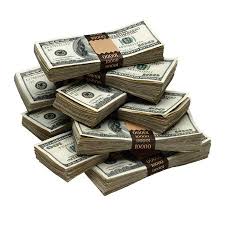Electronics (Electron Mechanics) refers to the flow of charge (moving electrons) through nonmetal conductors (mainly semiconductors), whereas electrical refers to the flow of charge through metal conductors. For example, flow of charge through silicon, which is not a metal, would come under electronics; whereas flow of charge through copper, which is a metal, would come under electrical. This distinction started around 1906 with the invention by Lee De Forest of the triode. Until 1950 this field was called "Radio techniques" because its principal application was the design and theory of radio transmitters and receivers.
The study of new semiconductor devices and related technology is considered a branch of physics whereas the design and construction of electronic circuits to solve practical problems comes under electronics engineering. This article focuses on engineering aspects of electronics.
Surface mount electronic components
Electronic devices and components
An electronic component is any physical entity in an electronic system whose intention is to affect the electrons or their associated fields in a desired manner consistent with the intended function of the electronic system. Components are generally intended to be in mutual electromechanical contact, usually by being soldered to a printed circuit board (PCB), to create an electronic circuit with a particular function (for example an amplifier, radio receiver, or oscillator). Components may be packaged singly or in more complex groups as integrated circuits. Some common electronic components are capacitors, resistors, diodes, transistors, etc.
Types of circuits
Analog circuits
Most analog electronic appliances, such as radio receivers, are constructed from combinations of a few types of basic circuits. Analog circuits use a continuous range of voltage as opposed to discrete levels as in digital circuits.
The number of different analog circuits so far devised is huge, especially because a 'circuit' can be defined as anything from a single component, to systems containing thousands of components.
Analog circuits are sometimes called linear circuits although many non-linear effects are used in analog circuits such as mixers, modulators, etc. Good examples of analog circuits include vacuum tube and transistor amplifiers, operational amplifiers and oscillators.
Some analog circuitry these days may use digital or even microprocessor techniques to improve upon the basic performance of the circuit. This type of circuit is usually called "mixed signal."
Sometimes it may be difficult to differentiate between analog and digital circuits as they have elements of both linear and non-linear operation. An example is the comparator which takes in a continuous range of voltage but puts out only one of two levels as in a digital circuit. Similarly, an overdriven transistor amplifier can take on the characteristics of a controlled switch having essentially two levels of output.
Digital circuits
Digital circuits are electric circuits based on a number of discrete voltage levels. Digital circuits are the most common physical representation of Boolean algebra and are the basis of all digital computers. To most engineers, the terms "digital circuit", "digital system" and "logic" are interchangeable in the context of digital circuits. In most cases the number of different states of a node is two, represented by two voltage levels labeled "Low"(0) and "High"(1). Often "Low" will be near zero volts and "High" will be at a higher level depending on the supply voltage in use.
Computers, electronic clocks, and programmable logic controllers (used to control industrial processes) are constructed of digital circuits. Digital Signal Processors are another example.
Building-blocks:
Logic gates
Adders
Binary Multipliers
Flip-Flops
Counters
Registers
Multiplexers
Schmitt triggers
Highly integrated devices:
Microprocessors
Microcontrollers
Application-specific integrated circuit (ASIC)
Digital signal processor (DSP)
Field-programmable gate array (FPGA)
Read more ... ( click here )
From Wikipedia, the free encyclopedia







